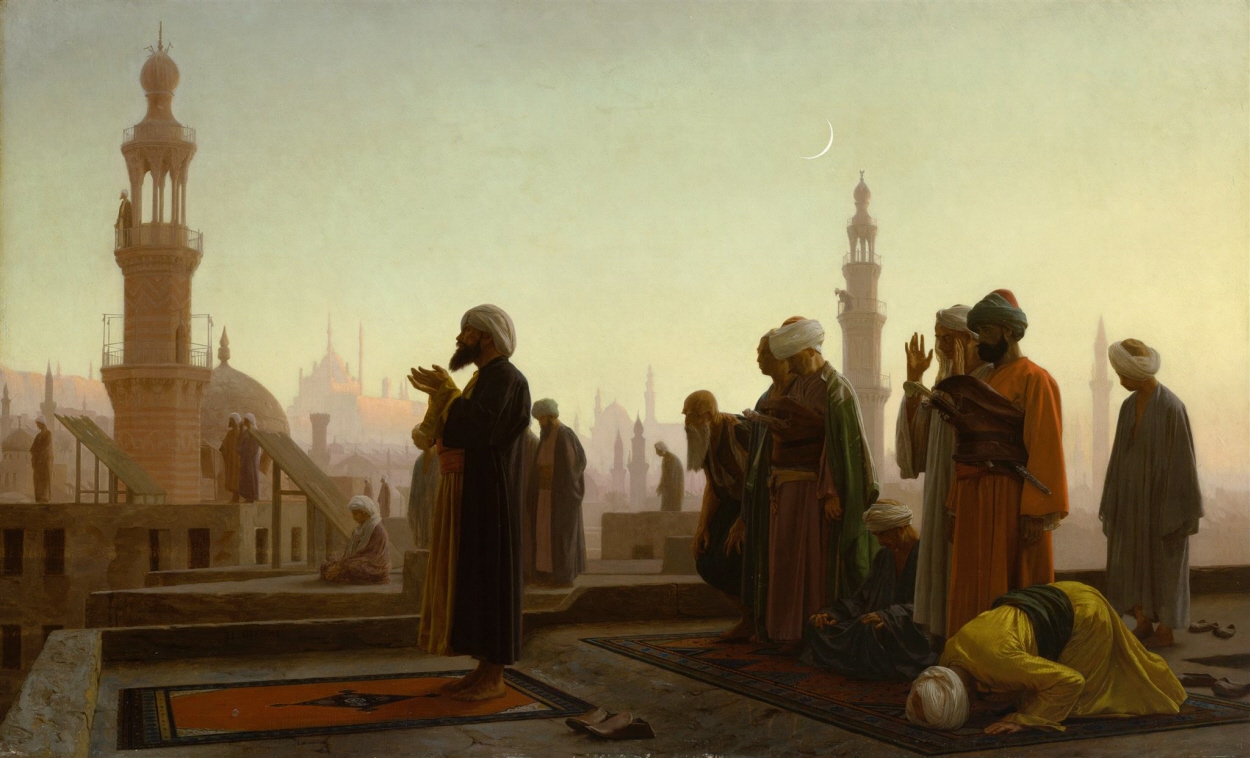Muslim and Muslim make up a significant portion of the world’s population, representing diverse cultures, traditions, and beliefs. Yet, many people still harbor misconceptions about what it truly means to be Muslim. The term “Muslim” itself encompasses a rich tapestry of faith that goes far beyond stereotypes and generalizations. In this comprehensive guide, we will explore the essence of being Muslim through understanding its core tenets and cultural practices.
From the Five Pillars of Islam—foundational acts that define a believer’s life—to commonly held misconceptions that can cloud perceptions, each section will unravel layers of this vibrant community. We’ll delve into differences between Sunni and Shia Muslims while celebrating their shared values. Moreover, we’ll highlight how to engage respectfully with Muslim communities in an increasingly interconnected world.
So whether you’re seeking knowledge for personal growth or simply curious about your neighbors’ beliefs and customs, this guide promises insights that are both enlightening and respectful. Join us on this journey as we discover more about the beautiful diversity within the Muslim community!
Understanding the Muslim and Muslim
Understanding Muslim identity goes beyond mere labels. It encompasses a wide range of beliefs, practices, and cultural nuances shaped by geography, history, and personal experience.
At its core, being Muslim means adhering to the teachings of Islam—an Abrahamic faith that emphasizes monotheism. Followers believe in one God (Allah), who revealed messages through prophets like Muhammad.
However, Muslims are not a monolithic group. They represent various ethnicities and languages across continents. From Indonesia to Brazil, their expressions of faith reflect local customs intertwined with Islamic principles.
This diversity enriches the global Muslim community while also presenting unique challenges. Language barriers and differing interpretations can lead to misunderstandings both within the community and in interactions with outsiders.
Recognizing this complexity helps foster deeper connections based on respect and empathy rather than stereotypes or assumptions about what it means to be Muslim today.
The Five Pillars of Islam
The Five Pillars of Islam form the foundation of a Muslim’s faith and practice. Each pillar represents a key aspect of what it means to be a follower of Islam.
The first is Shahada, the declaration of faith. This simple statement asserts that there is no god but Allah, and Muhammad is His messenger. It’s an affirmation that shapes a Muslim’s identity.
Next comes Salah, the ritual prayer performed five times daily. These prayers connect Muslims with their Creator and serve as moments for reflection throughout the day.
Zakat follows, emphasizing charity and social responsibility. By giving a portion of one’s wealth to those in need, Muslims reinforce community bonds while fulfilling religious obligations.
Fasting during Ramadan is another vital pillar known as Sawm. It teaches self-discipline and empathy for those less fortunate through abstaining from food and drink from dawn until sunset.
Hajj signifies pilgrimage to Mecca at least once in a lifetime if possible. It encourages unity among Muslims worldwide as they embark on this sacred journey together.
Beliefs and Practices of Muslim and Muslim
Muslims follow a rich tapestry of beliefs and practices that shape their daily lives. At the core is the belief in one God, Allah. This monotheistic view is fundamental to understanding Islam.
Prayer, or Salah, plays a pivotal role. Muslims pray five times a day facing Mecca. These moments provide spiritual connection and discipline.
Charity, known as Zakat, emphasizes giving to those in need. It’s not just an act of generosity but also an obligation for many Muslims.
Fasting during Ramadan fosters self-discipline and empathy for the less fortunate. It’s a time for reflection and community bonding.
The pilgrimage to Mecca, or Hajj, represents unity among Muslims worldwide. Undertaken at least once in their lifetime if possible, it highlights shared faith across cultures.
These beliefs are woven into everyday actions, shaping personal identity while fostering communal ties within Muslim communities around the globe.
Misconceptions About Islam
Misconceptions about Islam are widespread, yet many stem from ignorance or misinformation. A common belief is that all Muslims are violent or support terrorism. In reality, the vast majority of Muslims advocate for peace and coexistence.
Another misconception is that women in Islam have no rights. Many Muslim women actively participate in society, pursuing careers, education, and leadership roles while embracing their faith.
Some people also assume that Islamic practices promote extremism. However, core teachings emphasize compassion, humility, and community service.
Additionally, there’s a false notion that Muslims reject modernity. In fact, countless Muslim-majority countries contribute significantly to science and technology today.
Understanding these misconceptions is vital for fostering respect and dialogue between communities. With accurate information, we can break down barriers created by misunderstanding and fear.
Differences Between Sunni and Shia Muslims
Sunni and Shia Muslims represent the two main branches of Islam, each with distinct beliefs and practices. The division arose from a disagreement over the rightful successor to Prophet Muhammad after his death.
Sunnis make up about 85% of the Muslim population worldwide. They follow a system that emphasizes community consensus in leadership and interpretation of Islamic teachings. Sunni traditions often refer to the Sunnah, which includes actions and sayings of the Prophet.
Shias, on the other hand, believe that Ali, the Prophet’s cousin and son-in-law, was his rightful heir. They hold a strong reverence for Imams—spiritual leaders regarded as infallible guides.
These differences extend into religious rituals, jurisprudence, and theological interpretations. While both groups share core beliefs like faith in one God and following Quranic teachings, their unique perspectives enrich the tapestry of Islamic culture.
Muslim Culture and Traditions
Muslim culture is a vibrant tapestry woven from centuries of history, tradition, and faith. Each community adds its unique thread, creating diverse expressions of Islam across the globe.
Festivals play a significant role in Muslim life. Eid al-Fitr and Eid al-Adha are celebrated with joy and communal spirit. Families gather for feasts, sharing traditional dishes that reflect their cultural backgrounds.
Art forms like calligraphy flourish within Islamic traditions. It often adorns mosques and homes, showcasing verses from the Quran in intricate designs. This art emphasizes beauty while respecting religious tenets.
Music and dance vary widely among regions but remain integral to celebrations. They serve as both entertainment and spiritual expression during important gatherings.
Dress codes also reflect personal identity while adhering to guidelines of modesty outlined in Islamic teachings. Traditional clothing varies by region but typically emphasizes dignity and respect within social contexts.
How to Show Respect to Muslim Communities
Respecting Muslim communities begins with understanding their beliefs and practices. Engaging in open conversations can foster mutual respect. Ask questions when unsure, but be sensitive and mindful of personal boundaries.
When attending events or gatherings, show appreciation for cultural traditions. Observing Ramadan by being discreet about eating or drinking publicly is a simple yet meaningful gesture.
Language matters too. Using the correct terms, such as “Muslim” instead of “Moslem,” shows awareness and respect for identity. When addressing individuals, avoid making assumptions based on stereotypes.
Support local businesses owned by Muslims to contribute positively to the community. This not only promotes inclusivity but also strengthens relationships across diverse cultures.
Educate yourself about current issues affecting Muslim communities. Being informed helps dismantle misconceptions and fosters a more harmonious environment for everyone involved.
Common Questions About Islam Answered
Many people have questions about Islam that stem from curiosity or misconceptions. One common inquiry is about the role of women in Islam. Contrary to some beliefs, women hold significant positions within Islamic communities and are often empowered through education and leadership roles.
Another frequent question revolves around dietary laws. Muslims follow halal guidelines, which dictate what is permissible to eat. This includes specific practices for animal slaughter.
People also wonder about the concept of jihad. Often misunderstood, jihad primarily signifies a personal struggle toward self-improvement and spirituality rather than violence.
Additionally, many ask why Muslims pray five times a day. This practice fosters discipline and serves as a reminder of their faith throughout daily life.
These questions reflect a broader desire to understand Muslim beliefs more deeply while fostering respectful dialogues across cultures and communities.
Current Issues Facing Muslim and Muslim Communities
Muslim communities worldwide face a myriad of challenges. Among these, discrimination and Islamophobia remain significant concerns. Many experience harassment or violence simply due to their faith, which fosters a climate of fear.
Economic inequality is another pressing issue. A considerable number find it challenging to secure jobs or fair wages because of stereotypes associated with being Muslim. This impacts not only individuals but entire families and communities.
Additionally, political representation for Muslims often falls short. With limited voices in policymaking, many struggle to address issues crucial to their communities. The lack of representation can result in policies that overlook the unique needs and perspectives of Muslim populations.
Moreover, youth within these communities grapple with identity crises amid societal pressures. Balancing cultural heritage while integrating into broader society creates tension for many young Muslims today.
Conclusion
Muslims are a diverse community with rich traditions and beliefs that shape their identities. Understanding the fundamentals of Islam, including its Five Pillars, can help foster respect and appreciation for this faith. By addressing misconceptions and acknowledging the differences between Sunni and Shia Muslims, we gain insight into the complexities within the Muslim world.
Cultural practices vary widely across regions, adding layers to how Islam is expressed in daily life. It’s essential to approach Muslim communities with sensitivity and an open heart. Questions about their beliefs should be welcomed as opportunities for dialogue rather than judgment.
Current issues facing these communities often stem from stereotypes or political challenges that can lead to misunderstanding or discrimination. Engaging respectfully with Muslims not only enriches our own perspectives but also promotes harmony in our increasingly interconnected world.
As we embrace diversity, let us commit to learning more about one another’s cultures and beliefs—because it is through understanding that we create a more inclusive society for everyone.

















